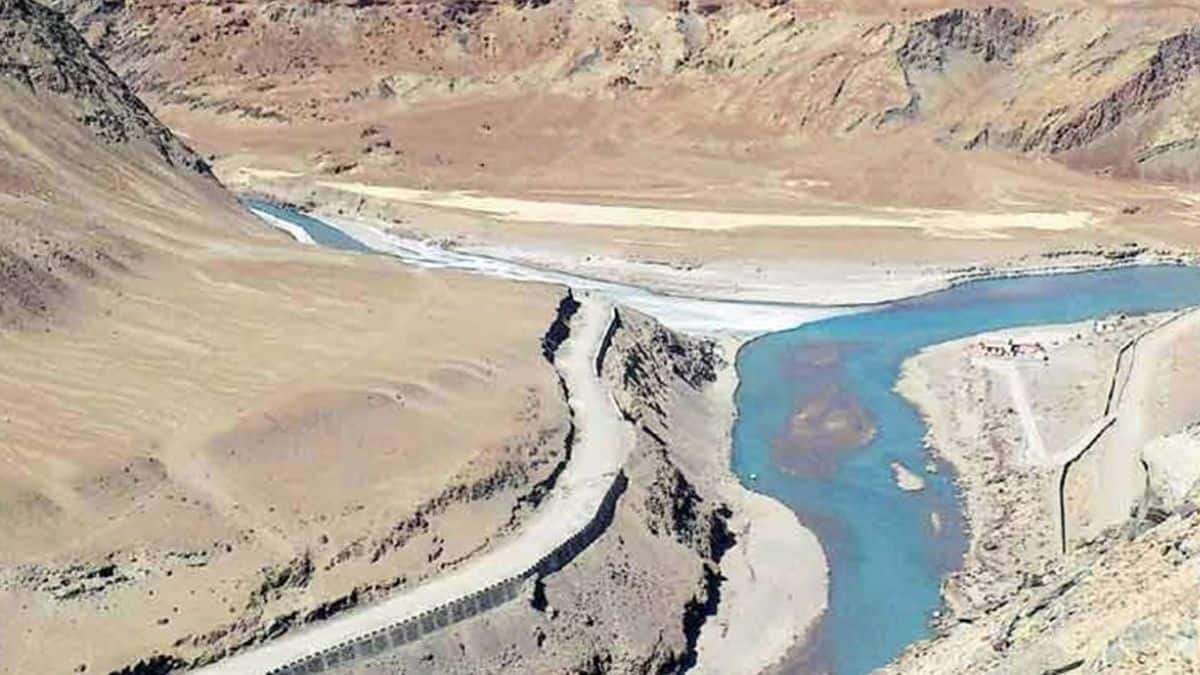Description

Disclaimer: Copyright infringement not intended.
Context
The discussion surrounding the Indus Water Treaty between India and Pakistan.
Details
- SDG 6 on water and sanitation is a critical goal of Agenda 2030.
- SDG 6.5 focuses on transboundary water cooperation, driven by sustainable water management and regional collaboration.
- The spotlight on the Indus Water Treaty has increased due to tensions between India and Pakistan.
- India initiated a "Notice of Modification" on January 25, 2023, expressing its desire to discuss potential changes to the treaty.
Background on the Indus Water Treaty
- The treaty was signed in 1960 to govern the sharing of the Indus River waters between India and Pakistan.
- The treaty allocates three eastern rivers (Ravi, Beas, and Sutlej) to India, and three western rivers (Indus, Jhelum, and Chenab) to Pakistan.
- Mediated by the World Bank, the treaty is considered a successful and beneficial water-sharing initiative implemented on a global scale for 62 years.
- The treaty is a legally binding agreement that outlines rights, responsibilities, dispute resolution mechanisms, and environmental considerations.
Importance of the Indus Water Treaty
- Sets an example for other international water treaties and promotes effective global water management.
- Demonstrates the integration of environmental concerns into agreements about shared water resources, aligning with sustainable development principles.
- Contributes to the development of international water law and serves as a reference for creating similar agreements worldwide.
Need for Renegotiation
- Changes in weather patterns and population expansion in India and Pakistan demand a re-evaluation of the treaty.
- The Indus River system is under pressure from climate change and increased human activity, risking the extinction of species and disrupting ecosystems.
- The treaty's focus on equitable distribution needs to be expanded to include other water sources and address additional water resource disputes.
- The dispute resolution mechanism could be made more efficient and time-saving, potentially involving the International Court of Justice.
- Consideration for sharing hydroelectric power, given the growing significance of renewable energy sources.
Geopolitical Dynamics and Treaty Implementation
- Shifting dynamics between India and Pakistan, characterized by tensions and conflicts, have impacted the treaty's implementation.
- Reviewing and updating the treaty can help resolve issues and serve as a foundation for fresh collaboration.
Uncertain Future and Diplomatic Channels
- The decision to amend the treaty lies with India, considering national interests and relevant circumstances.
- Diplomatic channels should be utilized to address potential changes while considering the concerns and interests of both states.

About Indus River System
- The Indus River system is a major river system in South Asia, spanning across multiple countries.
- It plays a crucial role in providing water resources for irrigation, drinking water, and hydropower generation.
Geographic Scope
- The Indus River system flows through multiple countries, primarily India and Pakistan, but also parts of China and Afghanistan.
- It originates in the Tibetan plateau and flows through the Himalayas, entering the plains of the Indian subcontinent.
- The Indus River system consists of several major tributaries, including the Jhelum, Chenab, Ravi, Beas, and Sutlej rivers.
- These tributaries contribute to the overall water flow and provide additional water resources to the region.
Importance for Agriculture
- The fertile plains along the Indus River system support extensive agriculture.
- Water from the river system is used for irrigation, enabling the cultivation of crops such as wheat, rice, cotton, and sugarcane.
Drinking Water Supply
- The Indus River system serves as a crucial source of drinking water for millions of people in the region.
- Cities and communities along the river depend on it for their domestic water needs.
Hydropower Generation
- The Indus River system's fast-flowing waters offer significant potential for hydropower generation.
- Dams and hydroelectric power plants have been constructed along the rivers to harness this renewable energy source.
Ecosystem and Biodiversity
- The Indus River system supports diverse ecosystems and habitats.
- It is home to a wide range of flora and fauna, including several endangered species.
Challenges and Environmental Concerns
- Climate change and increased human activity pose challenges to the Indus River system.
- Changing weather patterns, glacial melt, and water pollution threaten the sustainability of the river's resources.
Water Management and Cooperation
- Given the shared nature of the Indus River system, effective water management and cooperation among riparian countries are crucial.
- The Indus Water Treaty between India and Pakistan plays a significant role in governing the sharing of water resources.
Future Sustainability
- The sustainable management of the Indus River system is vital to ensure long-term availability of water resources.
- Environmental conservation and adaptation to changing circumstances are essential for the system's continued viability.
|
PRACTICE QUESTION
Q) Discuss the significance of the Indus River system in South Asia, highlighting its role in agriculture, hydropower generation, and as a source of drinking water. (150 words)
|

https://www.financialexpress.com/business/defence-indias-call-for-dialogue-exploring-the-potential-renegotiation-of-the-indus-water-treaty-with-pakistan-3144106/















